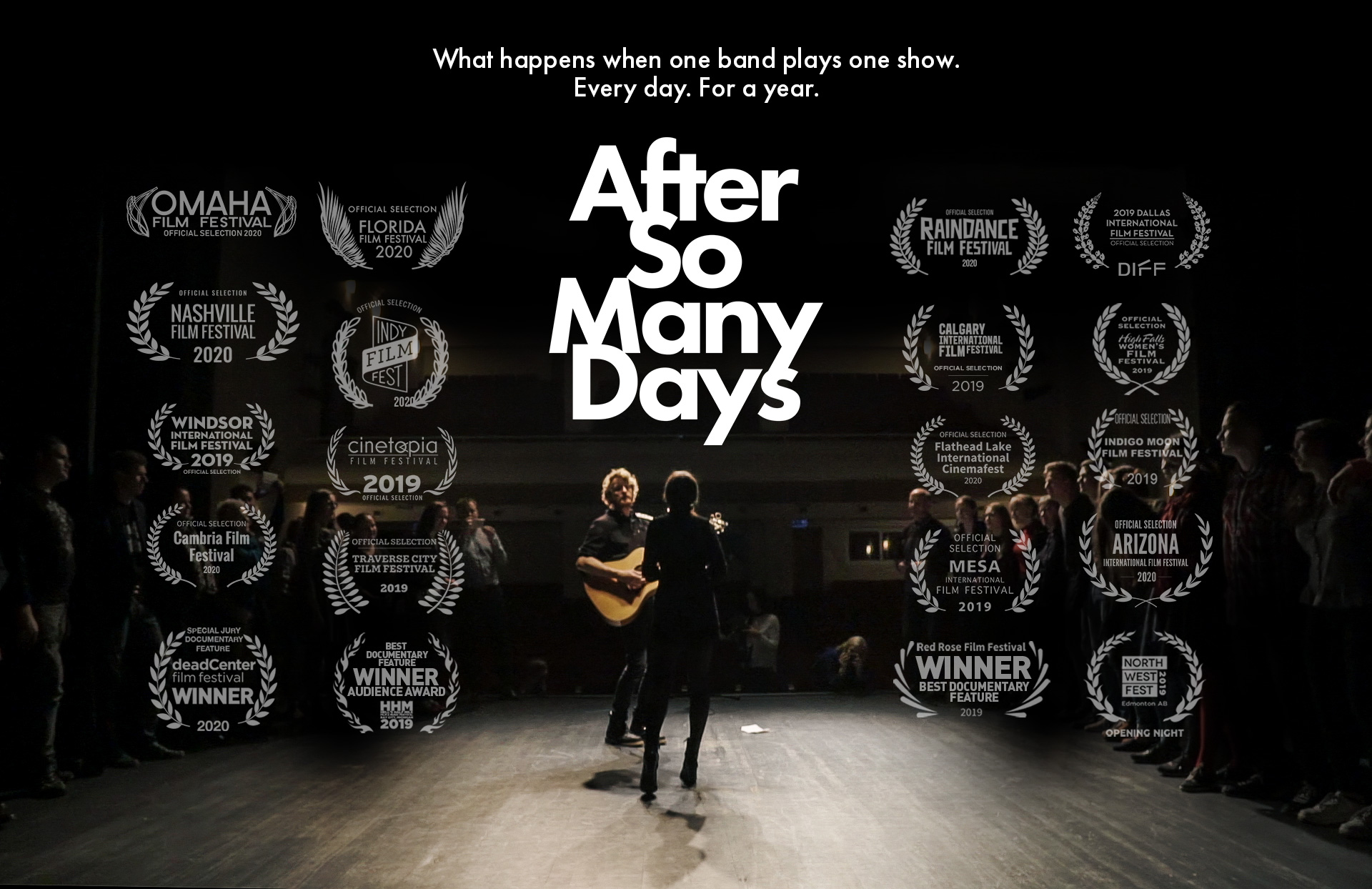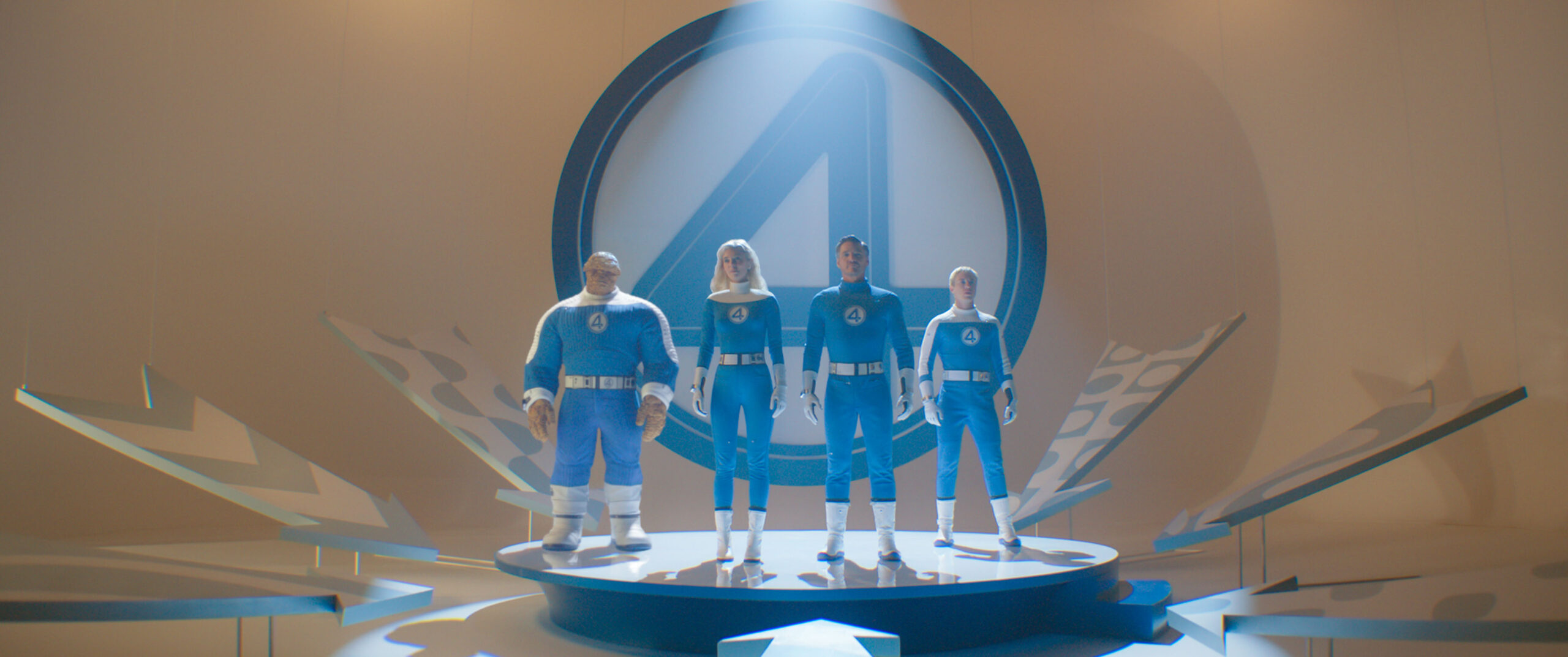After So Many Days documentary shows us a story of determination to reach your dream.
There are so many people who dream of moving to Los Angeles to make it as a big music star. Some quit very early into their journey, some find quick success but then squander it away. Some find something else that they didn’t know they were looking for.
Samantha Yonack and Jim Hanft had that dream early in their relationship hoping to make it big. After a decade of making music together, Jim and Sam decided to take control of their music career and decided to go “all in,” making a pact to play one show every day for a year.
With suitcases and a guitar, the troubadours traveled for a 365-day tour through 14 countries going to places they have never been too. After So Many Days, is an intimate front row seat to the highs and lows of what it’s like for two people to pursue a dream, together. I had the wonderful opportunity so talk with Jim and Sam about their journey making this documentary.
Nancy Tapia: I’ve had a chance to check out your documentary. I have to say, super creative and such bravery to go on such a huge adventure. Usually, when people talk about adventure, it’s like a one-time, couple hours event, days or at most weeks adventurous vacation. You guys on the other hand had a 365 days adventure. That’s quite a challenge.
Samantha Yonack: Thank you. Yeah, it was quite an adventure, for sure.
Nancy Tapia: So which one of you’s bright ideas was this?
Samantha Yonack: You know, we’re not sure. What we do know is that we were in Sweden a couple of years ago. We were working with some producers there. We were up late one night, and Jim and I were just kind of complaining about the music industry, and the producer said to us, “You know what, guys, you should just go out and you should just play. Play every day, play all the time.” I think we kind of sat with that, and we took it to heart and-
Jim Hanft: And took it way too literal!
Samantha Yonack: Yeah, haha. We didn’t do anything about it for the next couple of years. But we got married, and we were feeling kind of stuck.
Jim Hanft: We heard that phrase in our heads, and we decided. Neither of us thought it was a bad idea at the time. Basically, neither of us talked the other one out of the idea, which we tend to do sometimes with ideas. So we felt like if we’re both on the same page with it, we should do it.
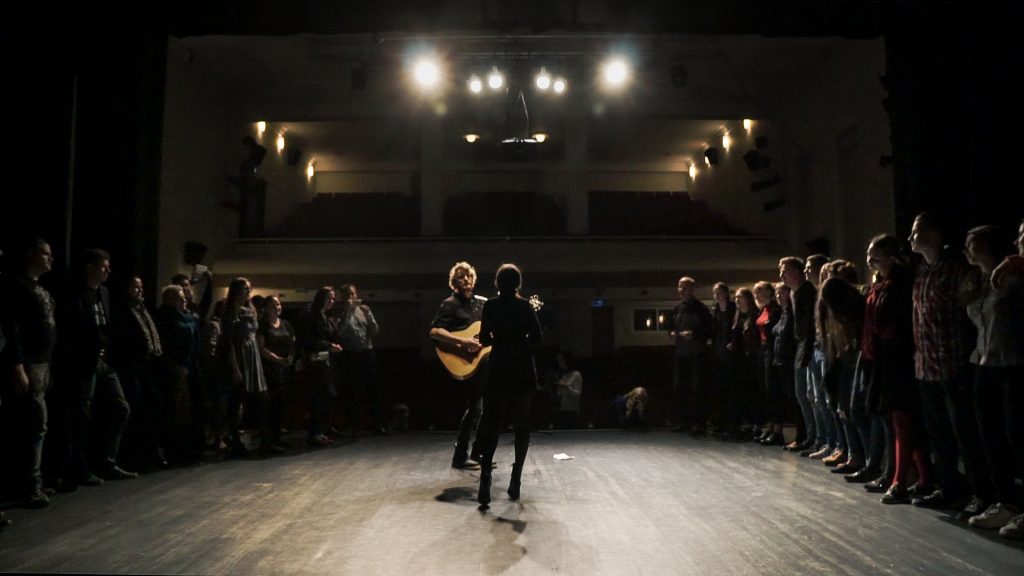
Also Check Out: Rubika Shah Covers A Legacy Of Racism In White Riot Documentary [Exclusive Interview]
Nancy Tapia: That was super brave. Do you think the fact that you guys are married kinda of helped? That bond helped stick together to get through this when you guys were struggling. Especially when the tour was not going nearly close to what you anticipated?
Jim Hanft: I think the answer to that is absolutely yes. I think that the bond that we share started with music, and then we were in a band prior to ever being in a relationship. Once it became a relationship, as any partnership should you should want the other person to be happy and be fulfilled. I think that on this tour, when things were going bad, I knew how important it was for Sam. With being creative, performing and how important this is this pursuit and this adventure was to her. I think in those moments, I was able to push Sam and vice versa. She could push me in my tough moments. I do think that in others you don’t have to be in a relationship to be able to complete something like this, but I do think it helps.
Samantha Yonack: But it did both. Sometimes it was really tough being married, and really knowing the other person really well. Sometimes, I think, when you’re just in a business relationship, or even just a friendship, there are just places that you don’t go. When you’re married, you go to those places. So when you’re with each other all day, every day, I think that can definitely make it tough. So it was both. But ultimately, I’m glad that we did it.
Nancy Tapia: Around which days would you think both of you were kind of like, “Wow, are we going to be able to complete this?” When did you questioning completing the tour?
Samantha Yonack: You know, that feeling would come in and out. I think somewhere in the middle of the tour, when there was a lot of time left, that feeling would happen. But really, when it would happen the most is when we would play a show, and we weren’t really present. We would feel like just not fully give it our all. I think we would just kind of get really hard on ourselves. It was those times that we were like, “What are we doing? Why are we doing this?”
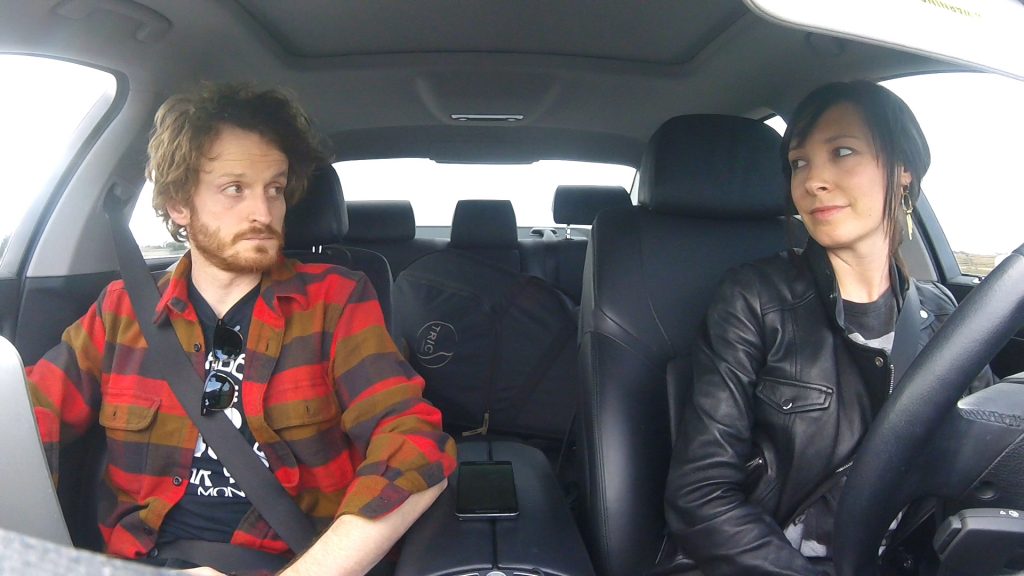
Jim Hanft: Yeah, totally. I think with any adventure, we can use another word than adventure. In any pursuit, there’s momentum at the beginning, there’s that excitement, and you also have a lot of people around you that are excited, and you’re kind of living off that momentum. Then at some point, the momentum really just has to live within yourself because a lot of the other people go, “Great.” The momentum was there, but they’re off doing their own thing. With this tour, there were different moments that we would find momentum. We really had to find that momentum regularly, both with each other and in the music.
Nancy Tapia: At the beginning of the documentary you had a gentleman encouraging you and telling you that what you were doing was actually living your dream. Then later on in a moment of frustration , Jim said, “…feeling like our time can be better served not doing this.” That actually kind of made my eyes watery because as a viewer, I was cheering fo you and felt like, “Wow, these guys can do anything. And they’re keeping that positive perspective,” So it was sad to see the that low moment, where you felt like, “What’s next?” Like, what to do?
Jim Hanft: Yeah, and I’m sorry your eyes watered in that moment. I was going to say most people, experienced that. I think we all experienced that at some point, where you’re doing something and sometimes you feel like a fool, or you feel like it’s not the right use of your time. I think it was for us, it was really important as musicians. Even just thinking in a moment of other musicians. Specifically watching this film, every musician can relate to that feeling. I think we really wanted to make sure to show that. Show people that they’re not alone in those moments.

Nancy Tapia: What was your favorite audience throughout your 365 days?
Samantha Yonack: There were so many that it’s hard to pick. I’d say one story that’s not in the film was Jim and I were on a double-decker bus, and we were in the middle of London somewhere. It was late at night, and we hadn’t played the show. We overheard these guys talking about music.
Jim Hanft: Yeah.
Samantha Yonack: And Jim goes over to them, and he said, “Hey.” It was like… and there were people. Some where older, younger, they were all different races. Jim was like, what did you ask them?
Jim Hanft: I asked them, “Are you guys DJs?” The types of music they were talking about, there was no connection. They seemed like such different people and I said, “Are you guys DJs?” Because I thought maybe they were coming from a DJ convention, or I have no idea. I just didn’t understand how they had this wide variety of a conversation.
Then they said, “No, we’re actually coming from Addicts Anonymous.” It was three guys that were struggling with addiction. Sam and I, we actually dedicated a song to our friend who we lost to addiction, and we’ve written. A lot of our music has been written about seeing people we love go through the struggle. So here we are in London on the double-decker bus, we got the guitar, and we played for these guys this song about our friend. It just opened up this conversation with three strangers we never would have had.
Nancy Tapia: Well, that’s the power art with music.
Jim Hanft: Totally.
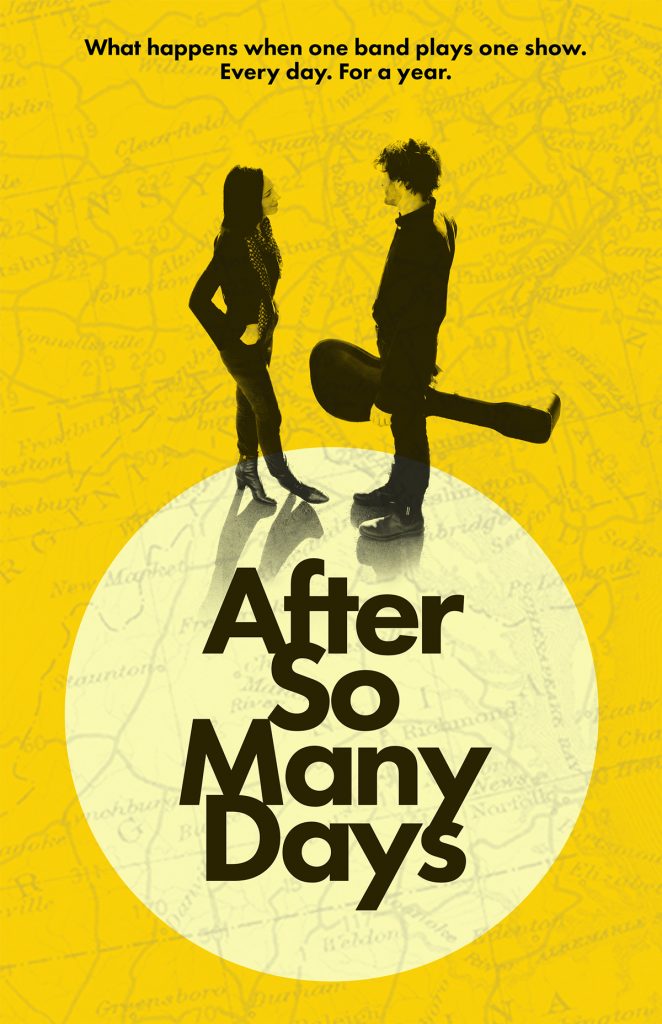
Nancy Tapia: On an uplifting note, we got to see the story of you signing on with Network Records during the documentary. I believe your album came out the 9th of October.
Jim Hanft: Yeah!
Samantha Yonack: Yeah! It just came out on all the platforms!
Nancy Tapia: Congratulations. How does it feel?
Samantha Yonack: Thank you! It feels really good, it was really cool. A lot of the music was recorded during the tour. It was written during the tour. It was inspired by the film, and just our overall experience. So it was really cool to kind of have a collection, and use it to go alongside the story. Kind of be able to tell this story in a different way through music. It was cool for us to kind of have both mediums to be able to kind of express this story.
Nancy Tapia: We have to emphasize the fact that you both directed the film. What were the challenges of directing? You took care of the filming part, filming your self perform and trying to share everything that’s going on. Can you share a little bit of the challenges in that?
Samantha Yonack: Yeah, in the beginning, I would say probably the first month, it was really tough because neither one of us had really used a camera this way. So it was really us kind of fumbling, and figuring out how to use the camera. Then probably about 30 days in, we started getting a little bit more comfortable. I think Jim always says this, the camera kind of became a third member of the band. It was with us at every show, every hotel room, and every car ride. It just kind of became second nature to start capturing all these moments.
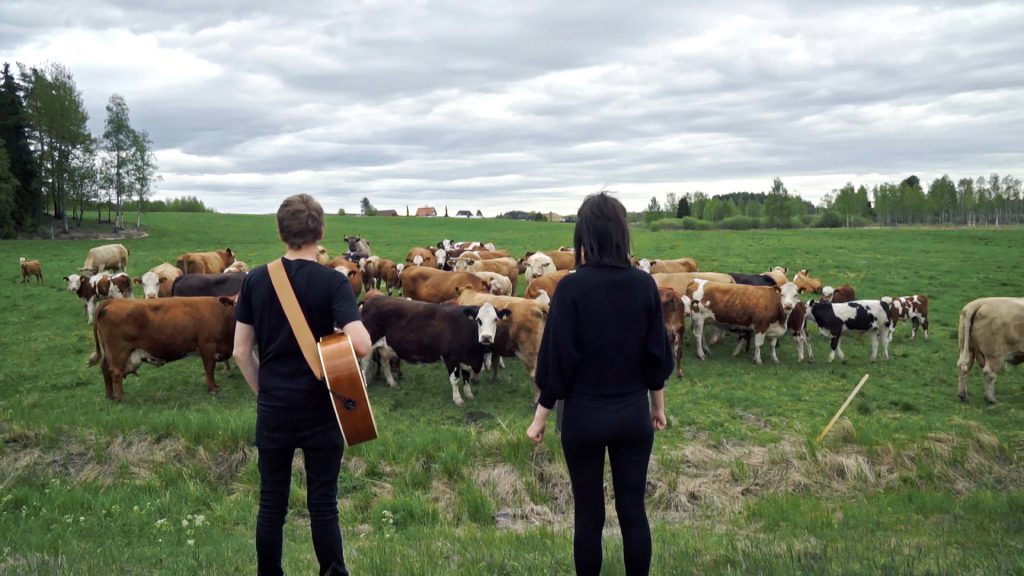
As the tour went on, the moments that we were capturing, we were like, “Oh, we definitely want to be capturing this.” It’s like it became more clear. It was really cool to be able to learn this on the road, this new tool. Then when we were cutting the film together with two friends of ours, it was really close to the footage. We had our memory and we had this footage too. So it was just a really great way to be able to put this film together.
Nancy Tapia: And you have a very beautiful scenery for some of the scenes.
Jim Hanft: Thank you for saying that. Yeah. I think that’s also part of this learning process. Not just with using a camera, but learning and figuring out what to film. I think because there was two of us, we started to learn, not our roles because we both did everything. I just distinctly remember Sam being much better than me about going, “Pull the camera out. We need to be filming this. You need to be filming this.” You know what I mean? I would sometimes maybe be distracted, or doing something, but it was kind of that. It was basically the two of us holding each other accountable.
Samantha Yonack: But in regards to a lot of the beautiful scenery, there were obviously, moments that we saw something beautiful and wanted to capture it. Then every once in a while, maybe like 10-15% of the tour, we would have other people come along with us on the road. One person in particular, Mike Walland, he came out for like two weeks with us and shot some really beautiful shots. There’s a lot of that in the film, which we are really grateful to have.
Also Check Out: ‘Harry Chapin: When In Doubt, Do Something’ Is A Story About Maximizing What We Have [Exclusive Interview]
Nancy Tapia: As musicians, what do you hope other musicians out there can take away from watching your film?
Jim Hanft: I think one of the number one things is to really celebrate the in-between moments that you may not realize are the best parts of being a musician. Whether that’s writing a song and sitting down and being inspired to do that, or being in front of an audience. Even if that audience is super small, connecting with somebody. Remembering that those things as an artist or as a musician and specifically as a performer, those are truly the best moments. It will never be replaced by metrics and praises on the Internet and all that kind of stuff. That will never replace the actual feeling of writing, or the feeling of connecting with the human in-person.
Samantha Yonack: I think just being.. We were talking about this the other day, Jim. I think the idea of pursuit in general. The pursuit itself, enjoying the pursuit, enjoying what you’re doing, and just not constantly looking at what’s next, and what’s bigger, and how do I get to that next place. Because you’re always going to feel that, but if you’re not in the moment, and you’re not taking in where you are, it’s going to be a really long road. So that’s something that I’d say.
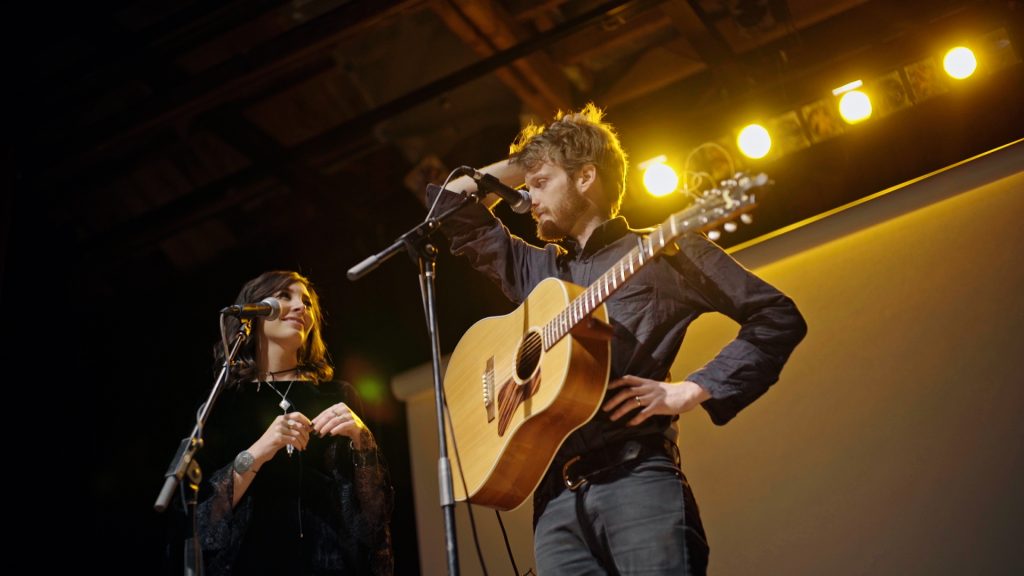
Nancy Tapia: Outside of being a musicians, but as am individuals, I’m pretty sure this experience changed you a bit, and made you see life in probably a different perspective. How so from day one of your journey to finalizing? What perspective have changed?
Jim Hanft: That’s a great question. You’ve got something?
Samantha Yonack: Yeah. I think part of it is what we were saying earlier. Part of it is showing up fully regardless of how you’re feeling. If you don’t show up to something all the way, the moment is just going to pass you by, and you’re going to just be searching for something else. I think we went out on this tour hoping for one thing. Kind of hoping for this success that looked like something in one way. Then we went through this journey, and I think success to us looks really different now.
Jim Hanft: Yeah, it’s absolutely what you’re saying about showing up. I think there’s a big perspective showing up fully. Not just to your music, into your art, but to your partner, to the moment you’re in, to the view you’re looking at. Really trying to be there, and kind of be present, which is a place I never was at. I was a little bit of a for better or worse I’m a little bit of a jackrabbit. I probably have slight ADD, and all these types of things. Sometimes that keeps me from truly being in the moment and this tour taught me that.
I want to just add about the perspective thing in regards to what we would tell other musicians for anybody who is in a rut, or in a tough spot. With this tour, we kind of created this finish line, right? The finish line was the 365th show. But right at the end of the finish line, there’s another. All of a sudden you’re on another track. There’s another thing. It’s a movie. Then you finish the movie, and there’s another thing.
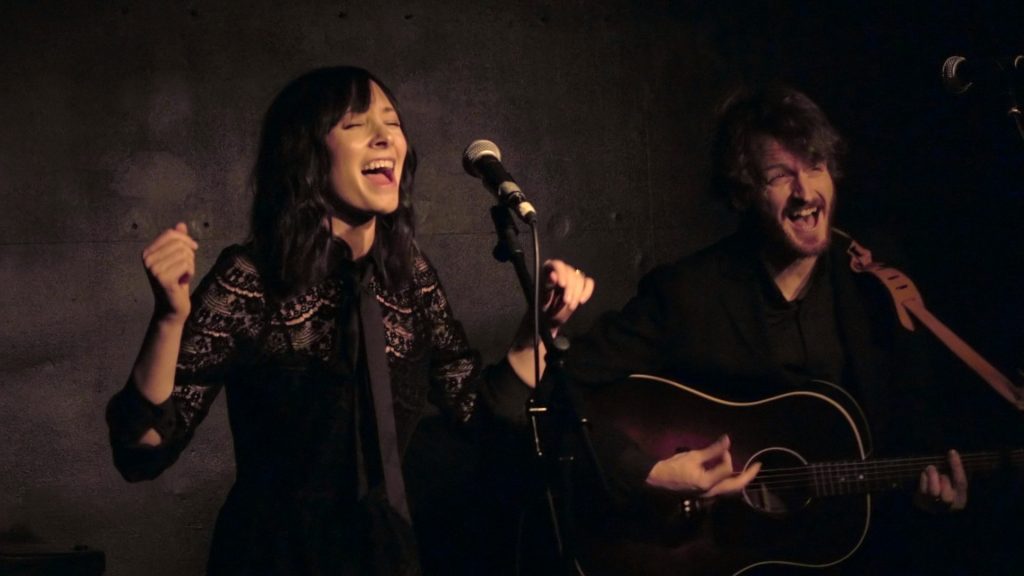
But if you’re in a rut, I do think a finish line in some way, and even if that’s, “You know what? I want to ride one song a month, and that’s the goal.” My goal is to do that. Setting up little goals. I’ve seen this with friends of ours in different ways, how it really has pulled them out of a rut. All of a sudden, what starts as, “I’m going to just write one song a month, and that’s my goal,” turns into, “Well, I just wrote 24 songs in a year, and it’s all because I set that initial goal.” So I think that’s something I wanted to mention.
Nancy Tapia: Thank you so much for sharing and congratulations again. Like I said, admiration to you both because that’s a huge challenge you guys set yourself up for. But hey, it was a successful. Now people are going to be able to listen to your music, and watch the whole making of your journey. The story of your album for the documentary that’s coming out October 20th.
Samantha Yonack: Thank you so much for having us.
Jim Hanft: Thank you so much for having us. So good to meet you.
Nancy Tapia: Of course, thank you and good luck.
You can check out more of After So Many Days here.

 FOR FANBOYS, BY FANBOYS
Have you checked out LRM Online’s official podcasts and videos on The Genreverse Podcast Network? Available on YouTube and all your favorite podcast apps, This multimedia empire includes The Daily CoG, Breaking Geek Radio: The Podcast, GeekScholars Movie News, Anime-Versal Review Podcast, and our Star Wars dedicated podcast The Cantina. Check it out by listening on all your favorite podcast apps, or watching on YouTube!
Subscribe on: Apple Podcasts | Spotify | SoundCloud | Stitcher | Google Play
FOR FANBOYS, BY FANBOYS
Have you checked out LRM Online’s official podcasts and videos on The Genreverse Podcast Network? Available on YouTube and all your favorite podcast apps, This multimedia empire includes The Daily CoG, Breaking Geek Radio: The Podcast, GeekScholars Movie News, Anime-Versal Review Podcast, and our Star Wars dedicated podcast The Cantina. Check it out by listening on all your favorite podcast apps, or watching on YouTube!
Subscribe on: Apple Podcasts | Spotify | SoundCloud | Stitcher | Google Play

